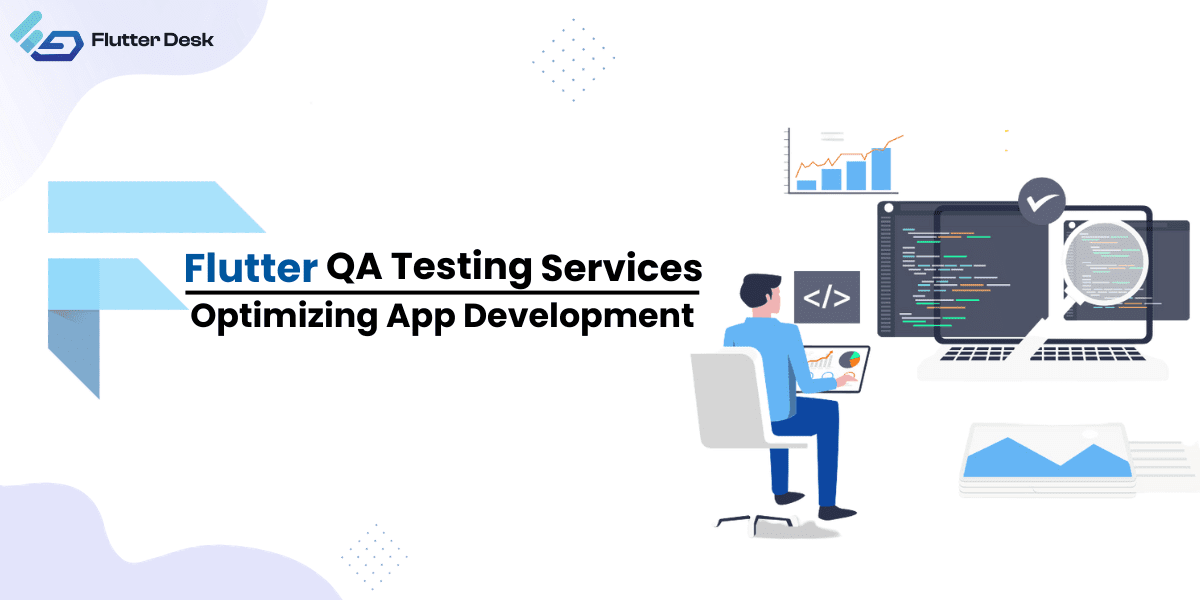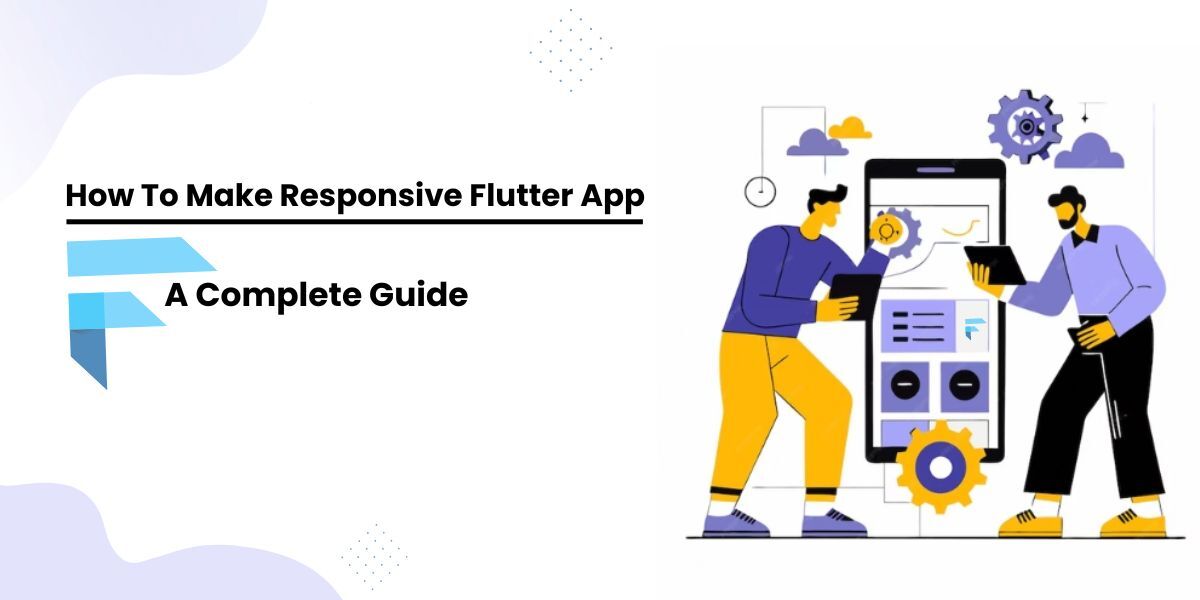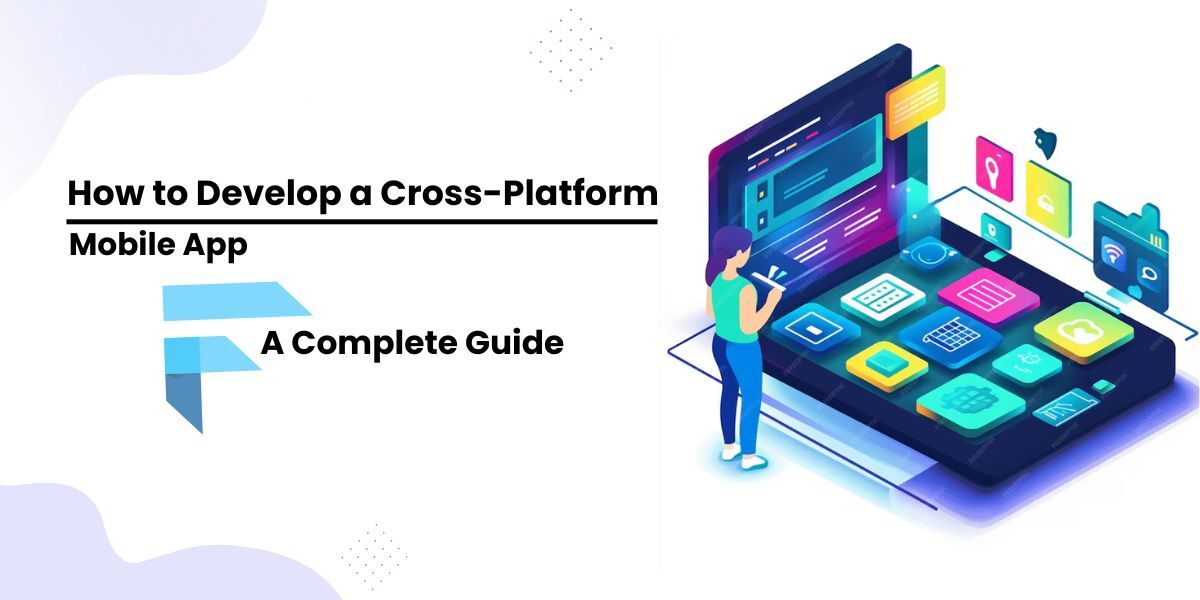In the rapidly evolving app development world, QA testing services are a cornerstone of success. These services are no longer a mere afterthought; they are integral to producing a top-tier application. While app developers are focused on crafting interactive and feature-rich applications, QA testing ensures that these innovations function as intended, free of glitches and vulnerabilities.
With the surging popularity of Flutter for app development, understanding how QA testing integrates within this framework becomes pivotal. This is not just about ensuring quality; it’s about understanding the nuanced interplay between development and testing in the app’s lifecycle. In this blog, we’ll delve deep into the symbiotic relationship between Flutter and QA testing, illuminating practices, tools, and strategies that every app developer should know.
What is QA Testing Services?
At its core, QA, or Quality Assurance, ensures a product or service meets defined quality standards and functions as intended.
But what is QA testing meaning in the context of flutter app development?
For app developers, QA testing services offer a systematic approach to detect anomalies and ensure the application is robust and user-friendly. It’s not just about finding bugs; it’s about ensuring that the user experience is seamless, that load times are optimal, and that the application responds well under various conditions, be it different devices, operating systems, or user behaviors.
As a UI software development toolkit, Flutter brings its challenges and advantages. With its unique widget-based structure and the promise of “write once, run everywhere,” ensuring that QA processes are tailored for Flutter is crucial. This is where specialized quality assurance in software testing services comes into play. They bring expertise in Flutter-specific scenarios, ensuring the apps are functionally sound and aesthetically consistent across platforms.
Differentiating QA Testing Types
Being aware of the possible QA testing types is very important for Flutter app development.
Each type offers a distinct lens through which the application is evaluated, ensuring comprehensive coverage and robustness. Developers can craft applications that stand tall in a competitive marketplace by understanding and integrating these testing types.

Functional Testing
This is the most basic form of testing, centered on the app’s functions. It assesses whether the application operates according to the specified requirements. In app development, functional testing checks individual features for accuracy, ensuring that every button, swipe, and action yields the expected result.
Regression Testing
As updates and changes are made to an app, regression testing ensures that new code changes haven’t adversely affected existing features. It ensures that previously developed and tested software still performs after a change.
Integration Testing
In complex apps, various components or modules must work together. Integration testing verifies that different modules or services work correctly when integrated.
Performance Testing
As the name suggests, this evaluates the app’s performance under various conditions. It gauges factors like speed, responsiveness, and stability, which are especially crucial for apps that may experience high user traffic or require significant resources.
Usability Testing
This is all about the user. How intuitive is the app? Does it offer a pleasant user experience? Usability testing ensures the app’s user-friendly design and the user journey is smooth and logical.
Alpha & Beta Testing
Before an official release, an app might be subjected to alpha (in-house) and beta (a select external group) testing. This is to catch final bugs and get user feedback on real-world usage.
Security Testing
In today’s digital age, security is paramount. This type of testing ensures that the application is protected against potential threats and vulnerabilities. For apps dealing with user data, security testing is non-negotiable.
Compatibility Testing
Ensuring an app runs seamlessly across different environments is crucial with many devices and operating systems. Compatibility tests ascertain that the app functions consistently, irrespective of the device or OS.
End-to-End Testing
This ensures an application works, covering all its interactions from start to finish. It tests real-world scenarios, including communication between components and external systems.
Crafting an Effective Software Testing Strategy

- Requirement Analysis: Understand the app’s specifications, user requirements, and target devices/platforms.
- Define Scope: Identify the most crucial application parts that need rigorous testing and outline test objectives.
- Choose Testing Types: Depending on the app’s needs, decide on the relevant QA testing types (functional, performance, security, etc.).
- Tool Selection: Opt for suitable software testing tools and frameworks that align with the app’s platform and testing requirements.
- Test Planning: Allocate resources, set timelines, and establish criteria for success for each testing phase.
- Test Design: Create detailed test cases, scripts, and conditions to cover every feature and potential user flow.
- Execution: Implement the tests, ensuring that each is performed under the right conditions.
- Feedback Loop: Ensure open communication channels for instant feedback, enabling quick bug resolutions.
- Continuous Integration: Integrate testing into the development process, ensuring every update or change is automatically tested.
- Review & Iterate: Post-testing, analyze results, identify areas for improvement, and refine the strategy accordingly.
Tools and Technologies for Testing
The efficacy of quality assurance in software testing services largely depends on the tools and technologies employed. Choosing the right software testing tools in app development can make the difference between a seamless user experience and a bug-ridden application. Let’s delve into some of the most common and trusted agencies in the industry:
- Selenium: One of the most popular software testing tools, Selenium supports multiple languages and platforms. It’s particularly suitable for web application testing, allowing automation across various browsers.
- JIRA: More than just a bug-tracking tool, JIRA offers features for project management and integration with various testing tools. It aids in defect tracking, agile project management, and more.
- Appium: For mobile app testing, Appium stands out. It’s an open-source tool for automating mobile, tablet, and web application tests on iOS and Android platforms.
- TestRail: A comprehensive web-based test case management tool to manage, track, and organize software testing efforts.
- QTest: An agile project management tool that provides a comprehensive software test management platform for teams to handle Test Case Management, Test Execution, defect tracking, and more.
- LoadRunner: From Micro Focus, this tool tests applications, measuring system behavior and performance under load. Ideal for apps expecting high user traffic.
- Git/GitHub: While primarily known as a version control system, it plays a pivotal role in QA when integrated with continuous integration and continuous deployment (CI/CD) tools. It helps teams to track changes, revert to previous stages, and work on different branches simultaneously.
- Jenkins: An open-source tool offering functionalities for continuous integration and delivery, ensuring that apps are constantly tested with every update or change.
- Espresso & XCUITest: Native to Android and iOS platforms, respectively, these are used for writing UI tests for mobile applications to ensure user interfaces function as intended.
- Postman: For API testing, Postman is a go-to tool. It aids in validating the performance and functionality of web services, which is vital for apps relying heavily on back-end services.
Timing the Integration of Testing into the Development Cycle
Incorporating QA testing at the right junctures of the development cycle is crucial for optimal results.
While traditionally, testing was often reserved for post-development, modern best practices advocate for its integration right from the conceptualization and design phase. Early and regular testing allows developers to catch discrepancies at their nascent stages, leading to more manageable, efficient, and cost-effective fixes.
Furthermore, it ensures that the product evolves with a foundational emphasis on quality and user experience. By embedding testing throughout the development lifecycle, teams can iteratively refine the application, ensuring each release is robust and user-centric.
Importance Of Quality Assurance Testing In App Development
In today’s app-centric landscape, high-quality applications are not a luxury but a necessity. QA testing ensures reliability and user trust, striving for an uninterrupted, glitch-free experience. Preemptively identifying issues respects users’ time, safeguards their data, and reinforces the app’s promised value.
With an ever-competitive market and fickle user loyalties, application testing services are paramount. Even as innovative ideas capture initial attention, the steadfast quality, ensured through rigorous testing, retains users and upholds an app’s reputation.
Outsourcing QA Testing- Why and How
Outsourcing QA testing offers a fresh, expert lens, often revealing nuances an in-house team might miss. By engaging external specialists, companies tap into advanced tools and diverse experiences without the overheads of in-house maintenance. This approach ensures comprehensive app testing, allowing the core team to concentrate on primary development tasks. It’s a way to secure top-notch app quality without straining internal resources.
Choosing The Right QA Testing Service Provider
When selecting a QA testing service provider, alignment with your app development goals is paramount. Look for the following key characteristics:
- Technical expertise
- Industry experience
- Adaptability to change
- Robust communication channels
- Proven track record
A provider possessing these attributes can harmoniously mesh with your objectives, ensuring seamless app development.
QA Testing Best Practices for App Development
Integrating best practices in QA QC testing is non-negotiable to ensure a seamless and effective app development journey. Here are three pivotal best practices:
- Continuous Integration: By regularly integrating code changes and automating tests, you can identify and address issues early, ensuring that the product remains in a release-ready state.
- Prioritize User Experience: Beyond functionality, simulate real-world usage scenarios to ensure intuitive navigation, responsiveness, and user satisfaction.
- Stay Updated & Adaptive: The tech landscape is ever-evolving. Regularly update your testing tools and methodologies, and be ready to adapt strategies based on new findings and emerging trends.
Conclusion
QA testing is more than just a phase in app development; it’s a cornerstone that dictates an app’s reliability, user experience, and market success. In an increasingly competitive digital landscape, developers who prioritize and adeptly implement QA testing are better poised to deliver standout applications that function flawlessly and resonate deeply with their intended audience. It’s a pursuit of excellence where meticulous testing translates to market prominence.










